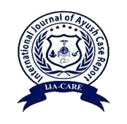The role of Yoga and Naturopathy in the Management of Anterior Cruciate Ligament Tear in Obese Patient- A Case Report
Abstract
The anterior cruciate ligament (ACL) rupture is one of the most prevalent knee injuries. ACL tears account for up to 64% of athletic knee injuries in cutting and pivoting sports, resulting in 120,000-200,000 ACL reconstructions (ACLRs) performed annually in the United States alone, at a cost of over 1.7 billion US dollars. Regardless of treatment, many persons with ACL injuries have poor long-term prognosis. ACL injuries frequently cause joint effusion, altered knee Kinematics and gait, muscular weakness, and decreased functional performance. A 25-year-old female obese patient with the obesity BMI of 47.7 kg/m2 and a tear in her anterior cruciate ligament was hospitalised to our hospital for three weeks of integrated yoga and naturopathic care. Before and after therapy, the WOMAC score, 10 metre walk test, and perceived stress scale score were all evaluated. After three weeks of therapy, the patient improved in all factors examined. And the current study's findings indicate that a Yoga and Naturopathy method is an effective management in the rehabilitation of an anterior cruciate ligament tear in an obese patient.

This work is licensed under a Creative Commons Attribution-NonCommercial-NoDerivatives 4.0 International License.

